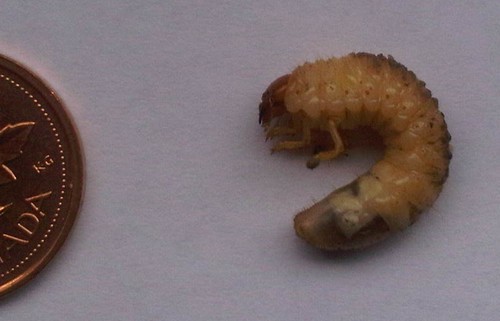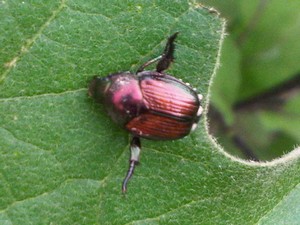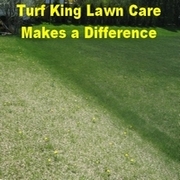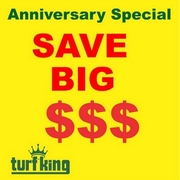When is the Best time to Treat for Grubs: Spring, Summer or Fall?
Many people are inquiring when they should treat their lawns when they have a grub problem.
Here are the facts.
- The grubs are hard to kill at any time
 of the year with the traditional insecticides.
of the year with the traditional insecticides. - The smaller and younger the grub, the easier it is to control them. Less insecticide is needed.
- The grubs do the most damage August through October when they are feeding and growing. Less damage is done at other times of the year. Control may be advised if skunks & raccoons tear up the lawn looking for them. (If anyone can get a crew of skunks or raccoons that are trained to remove grubs, eat them, and then put the sod back, we'd be happy to hire them)
- Even if we could destroy all the grubs in your lawn now, this will not prevent the next generation of grubs from attacking your lawn the next season. See the life cycle chart. The grubs in your lawn now (generally are European chafer larva) will pupate in May and turn into adults in June. The adults are flying beetles. They go on mating flights, do what adult beetles do, then the females look for lawns on which to lay their eggs. Because they fly, the females from a lawn 3 doors away may still lay eggs on your lawn. There is no sure way to predict which lawns will have eggs laid on them in the summer.

Options & recommendations
- If you treat for grubs in the spring, you must realize that another treatment may be necessary in the fall. It won't be the same grubs. As someone said, "It's the kids that are always the problem."
- If grubs are found in the fall, we recommend treatment in the fall to minimize damage.
- Repair any damage. Overseed the bare or thin spots. April is a good time. May is still okay as long as the seed receives enough moisture. Fall seeding is the best, Spring is second best.
- We highly recommend using Nematodes for the treatment of grubs.
- In June-July keep an eye out for the mating flights of the European chafers. They look like small June beetles. This indicates when the eggs will be laid and when the munching will begin.
- From early to mid August on, keep an eye on the lawn for damage. Call us right away so we can come out and have a look. Treatment with Nematodes is recommended to prevent further damage to the lawn.

If Merit (imadcloprid) is available in your jurisdiction, it will do a good job on controlling grubs. It needs to be applied during the period from the end of May until the end of July.
Merit must be applied before the end of July. Applying Merit when the grubs become visible in September and October is of little value. Merit should be used as a preventative measure.
Merit gives GUARANTEED season long control. (July through the next May.)
Merit is very effective and when used properly, is not detrimental to humans, pets, birds and earthworms.
As of April 22, 2009 Merit is no longer a permitted product in the province of Ontario
One of the adult insects that lays the eggs that hatch into White Grubs is the Japanese Beetle. This is a beetle with about 15 millimetres (0.6 in) long and 10 millimetres (0.4 in) wide, with iridescent copper-colored forewing and green thorax and head.











